Blackcurrant and raspberry leaves
Research notes on useful shrubs in the medicinal forest garden that offer more than delicious fruit
As the growing season gets under way here in the UK, I am reminded that some of our best fruiting shrubs can yield more benefits from their leaves in addition to their tasty berries. In a permaculture project, such as a forest garden, it is usual to have layers of plants including shrubs between trees. Ideal plants are ones that fulfil a number of functions, especially those that are productive of both edible and medicinal resources. These fruiting shrubs can also provide some ground cover. Here I consider blackcurrant and raspberry which are both bushes suited for woodland edges. These species originate from Europe and northern Asia and many cultivated varieties are available and are fairly easy to manage. They appreciate moist well-drained soils and applications of mulch help to keep competing plants at bay. These bushes do need occasional management by thinning or taking out older stems in winter. If some pruning of branches is delayed until spring there will be a supply of leaves to use fresh or for drying. Leaves are best taken young in the spring before flowering, but are still good for use if fresh and green later in the season.
Blackcurrant (Ribes nigrum)
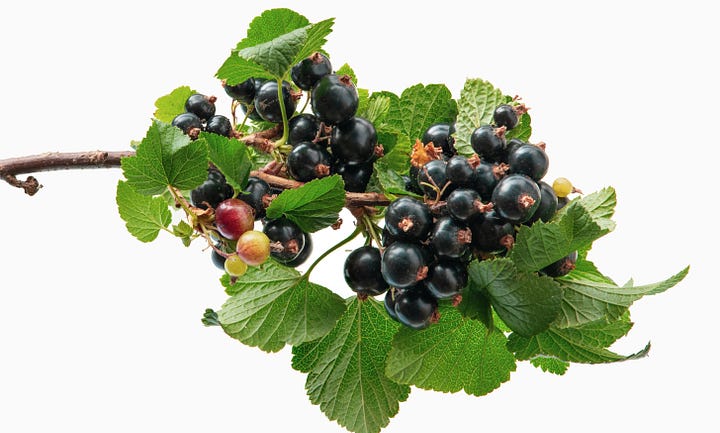

An aromatic and widely cultivated shrub with purple-black berries, the blackcurrant is part of the gooseberry family or Grossulariaceae. It is hardy to USDA zone 5, growing to 1.8 m by 1.8 m. This plant prefers moist soil which is well-drained. It can grow in partial shade and does well at the edge of woodland, especially with the addition of plenty of organic matter. Traditionally all parts of this plant, from fruit to bark and roots were used in fevers and swellings, and the leaves could be poulticed for wounds and insect bites. The fruit ripens in summer and is rich in vitamin C as well as other minerals and vitamins. The blackcurrants are useful to increase resistance to infections and can be made into a syrup to benefit colds and flu. The leaves can be used as a gargle for a sore throat. They have a diuretic effect so they can also be used in arthritic and urinary complaints. The leaves can be dried for use as a gargle or tea.
Benefits for the immune system
Research studies suggest that blackcurrant fruit and leaves can provide support for the immune system, and the anthocyanin content contributes to anti-oxidant effects (Cortez and de Mejia, 2019; Ejaz et al., 2023). Extracts of blackcurrant leaves have been shown to have antiviral effects, possibly useful in preventing viral infection at an early stage (Haasbach et al., 2014). A recent study focused on a constituent known as sarmentosin extracted in blackcurrant juice which positively affects transmitters in the nervous system and so may help in dealing with anxiety and stress (Lomiwes et al., 2024).
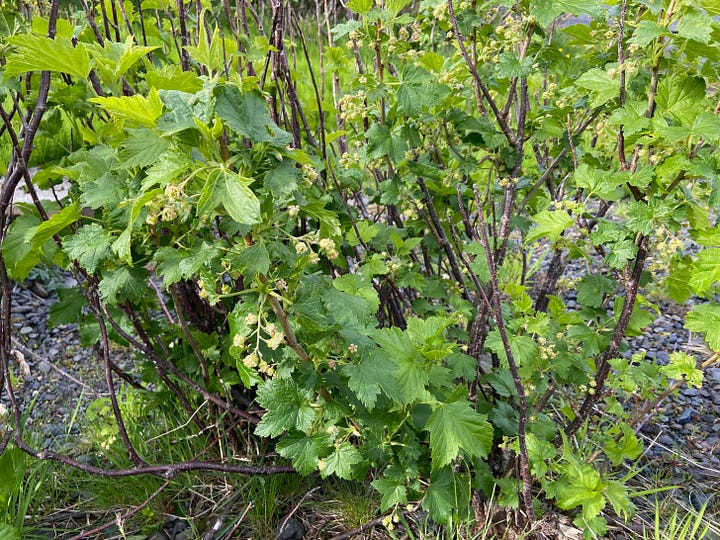
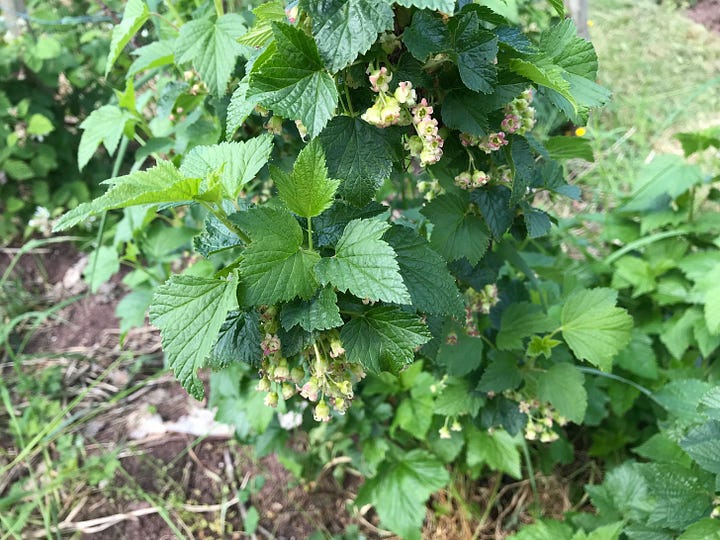
RECIPE FOR BLACKCURRANT LEAF TEA
4 tsp fresh blackcurrant leaves
500 ml water
sugar
Finely chop the blackcurrant leaves and place in a pot. Boil the water and pour it onto the leaves. Steep for 5-10 min. Sweeten to taste and drink hot several times per day.
RECIPE FOR BLACKCURRANT GARGLE
10 fresh blackcurrant leaves
300 ml water
Chop the leaves up and place in pan. Add the water and heat till it boils. Cover the pan and allow to simmer gently for 10 minutes. Take off the heat and allow to cool and strain through a coffee filter or muslin cloth. Use as a gargle once or twice daily. Keep refrigerated for 1-2 days.
Raspberry (Rubus idaeus)
A prickly shrub with juicy red fruits growing to 1.5 m by 1.5 m. The raspberry is a member of the rose family or Rosaceae. In terms of variety, wild raspberries can be foraged in Europe and North America although the most productive plants are vigorous cultivated varieties, both summer and autumn fruiting varieties. Raspberry plants are hardy to USDA zone 5, producing fresh canes each year. This plant will grow in semi-shaded woodland although fruit crops on new canes from previous years are best in an open and sunny position. Moist and slightly acidic soil that is well-drained is ideal. The roots are shallow so windy positions are best avoided.
Benefits for the reproductive system
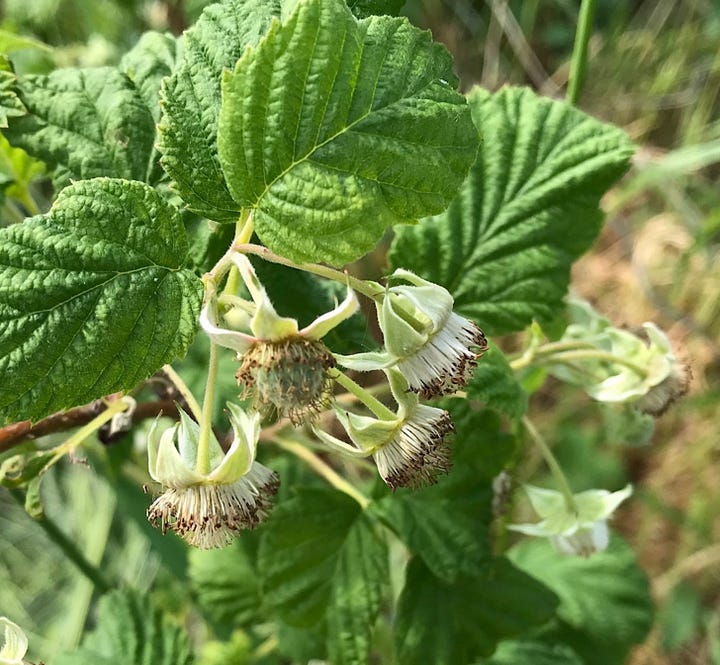
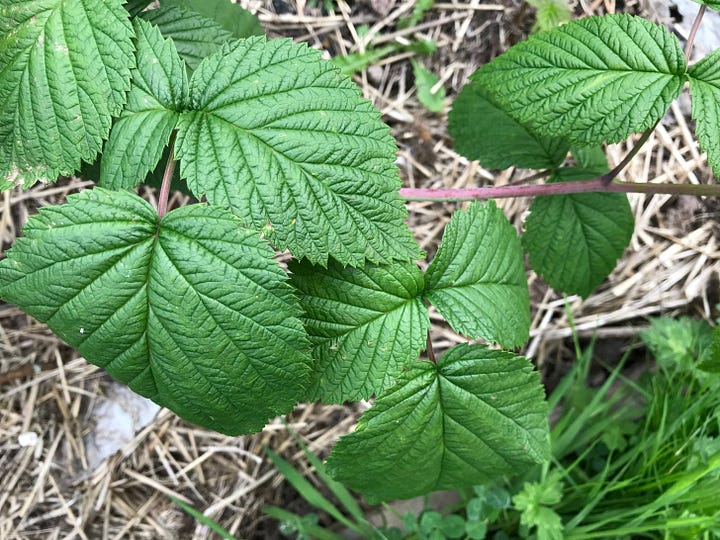
Traditionally the raspberry has provided anti-inflammatory and astringent effects for wounds, colic, diarrhoea and many other complaints from stomach bleeds to menstrual problems. A tea of the leaves can be used in diarrhoea and is widely used as a uterine tonic in the last trimester of pregnancy. The leaves can also be used as a gargle to treat tonsilitis and as a wash for minor sores and varicose ulcers. However, there is little clinical research to back up the use of raspberry leaf tea. So, there is some debate about raspberry leaf, long used in reproductive complaints, especially to reduce menstrual problems and to prepare for easier childbirth. Questions about the actions of raspberry leaf are aired in detail in a study by Socha et al. (2023). A recent observational study in Australia found that those women who took raspberry leaf tea in pregnancy were less likely to have medical interventions and lengthy labours, and further research is recommended (Bowman et al., 2024). On the basis of its long-standing use, raspberry leaf preparations are traditionally recognised in Europe for relief of minor spasms associated with menstrual periods, for treatment of mild mouth or throat inflammation and for treatment of mild diarrhoea.
RECIPE FOR RASPBERRY LEAF VINEGAR
50 g fresh raspberry leaves (25 g if dried)
500 ml apple or wine vinegar
glass bottles with flip tops
Place the raspberry leaves in a jar and add the vinegar. Stir well, close the lid and stand in a cool dark place for three weeks, shaking daily. Strain, bottle the vinegar extract and label, use within six months. Take 1 tsp up to three times daily in water (or use in food) to help with digestion or menstrual complaints.
RECIPE FOR RASPBERRY LEAF TEA
7-8 fresh raspberry leaves
200 ml water
Lightly crush the leaves and place in a pot. Bring the water to the boil. Pour the water onto the raspberry leaves, cover and steep for 5-10 minutes. Strain and add a squeeze of lemon or sweeten to taste. In pregnancy take only in the last trimester.
Conclusion
Growing these fruiting shrubs in the forest garden is great as they also offer leaves for healthy teas and other preparations. You can dry excess leaves in an airy place out of direct sunlight to use later in the season too. Needless to say there are lots of other fruiting shrubs to consider which can offer similar properties. Choosing your blackcurrant and raspberry varieties is likely to depend on what is available locally or online. It is unusual to find the wild native blackcurrant and raspberry shrubs unless you are foraging in woodlands, and if you find some they could be garden escapes! There is probably not a huge difference between wild and cultivated varieties in terms of health benefits (perhaps an area that needs more research). So, it is more likely that you will purchase plants from a garden centre. There should be quite a few varieties to choose from. Those that offer vigorous growth are ideal for leaf production but try to obtain the more rust and mildew resistant varieties to avoid damaged or diseased leaves, this includes blackcurrant varieties such as Ben Connan and Ben Nevis. If you are keen to consider more commercial production of blackcurrants then see the very useful guide to organic blackcurrant growing from the Atlantic Canadian Organic Regional Network (ACORN).
Please note: Always take advice about herbal medicines if you are pregnant or on any prescription medication. If symptoms persist or worsen you should consult a qualified practitioner.
References
Bowman RL, Taylor J, Davis DL. 2024. Raspberry leaf (Rubus idaeus) use in pregnancy: A prospective observational study. BMC Complement Med Ther 24:169. doi: 10.1186/s12906-024-04465-7.
Cortez RE, and de Mejia EG. 2019. Blackcurrants (Ribes nigrum): A review on chemistry, processing, and health benefits. J Food Sci 84:2387-2401. doi: 10.1111/1750-3841.14781.
Ejaz A, Waliat S, Afzaal M, et al. 2023. Biological activities, therapeutic potential, and pharmacological aspects of blackcurrants (Ribes nigrum L.): A comprehensive review. Food Sci Nutr 11:5799-5817. doi: 10.1002/fsn3.3592.
Haasbach E, Hartmayer C, Hettler A, et al. (2014) Antiviral activity of Ladania067, an extract from wild black currant leaves against influenza A virus in vitro and in vivo. Front Microbiol 5:171.
Lomiwes D, Günther CS, Bloor SJ, et al. 2024. Identification of sarmentosin as a key bioactive from blackcurrants (Ribes nigrum) for inhibiting platelet monoamine oxidase in humans. J Agric Food Chem72:16777-16789. doi: 10.1021/acs.jafc.4c03802.
Socha MW, Flis W, Wartęga M, et al. 2023. Raspberry leaves and extracts: Molecular mechanism of action and Its effectiveness on human cervical ripening and the induction of labor. Nutrients 15:3206. doi: 10.3390/nu15143206.


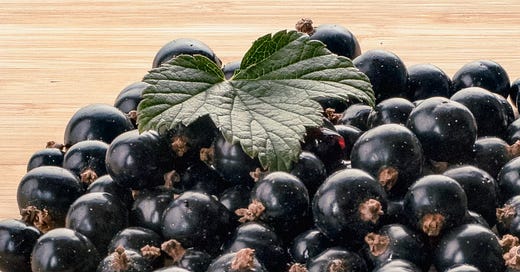



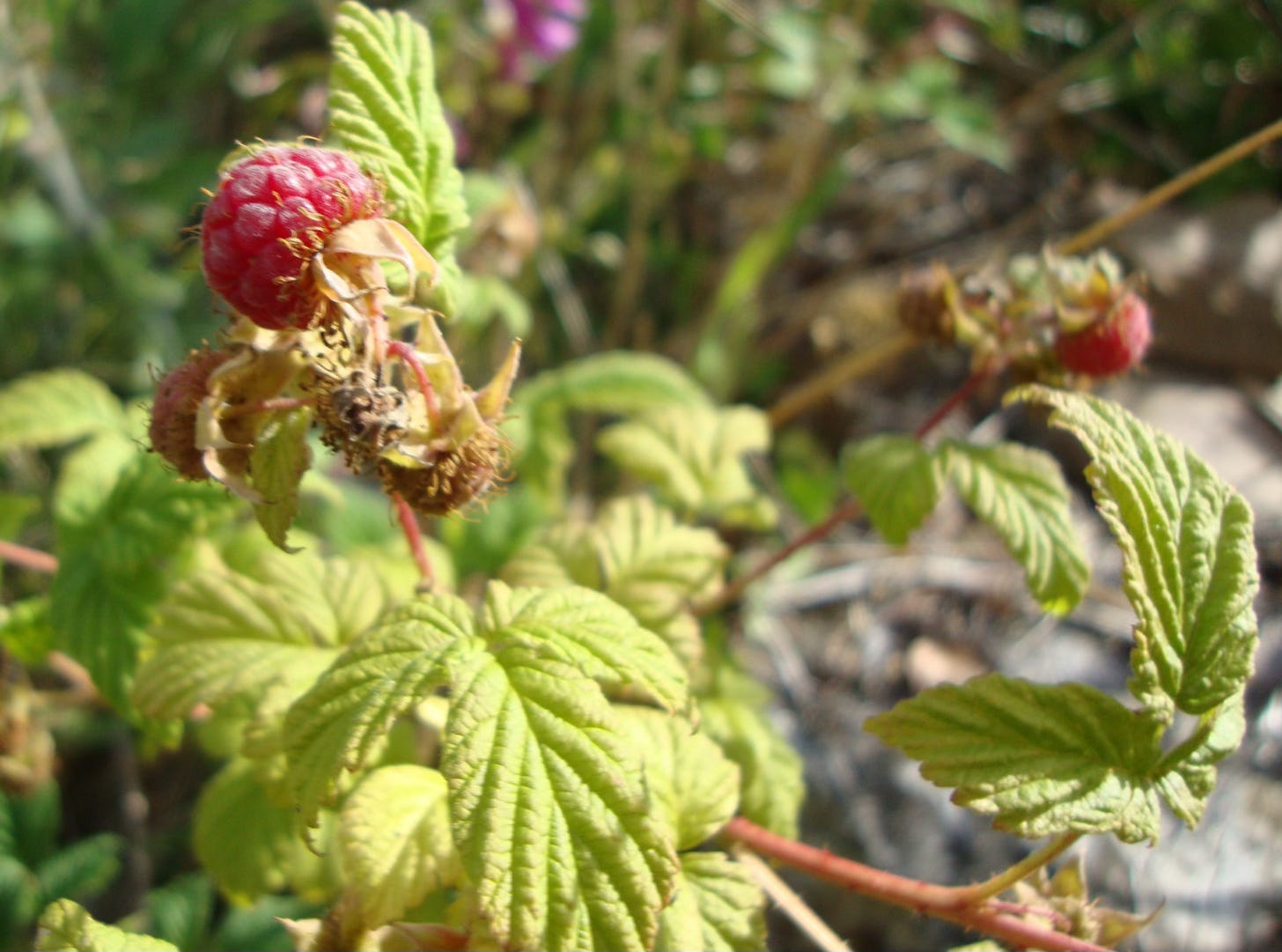

Really great article Anne. It's a while since I've used raspberry leaves in vinegar for menstrual support, and now I feel called to make up a batch! Herbal vinegars are such wonderful tonics! The plant leaves are so often overlooked as the berries offer so much flavour. Thanks for sharing your knowledge and permaculture advice.